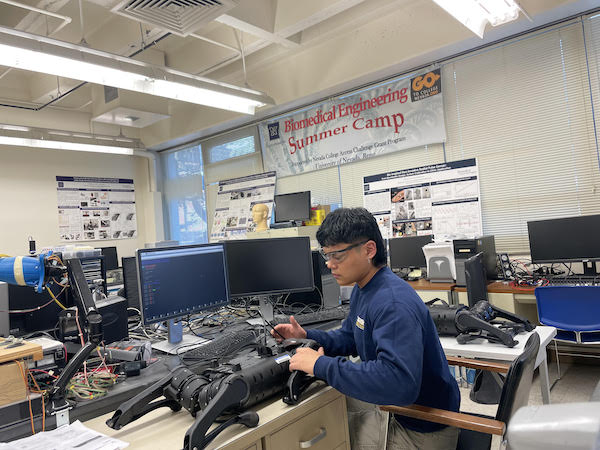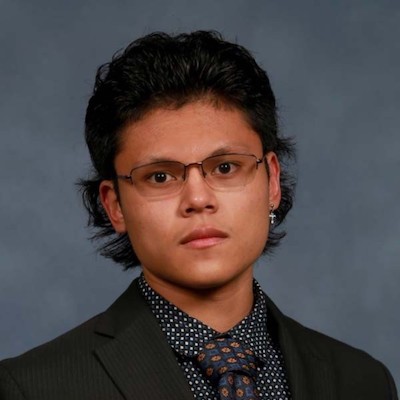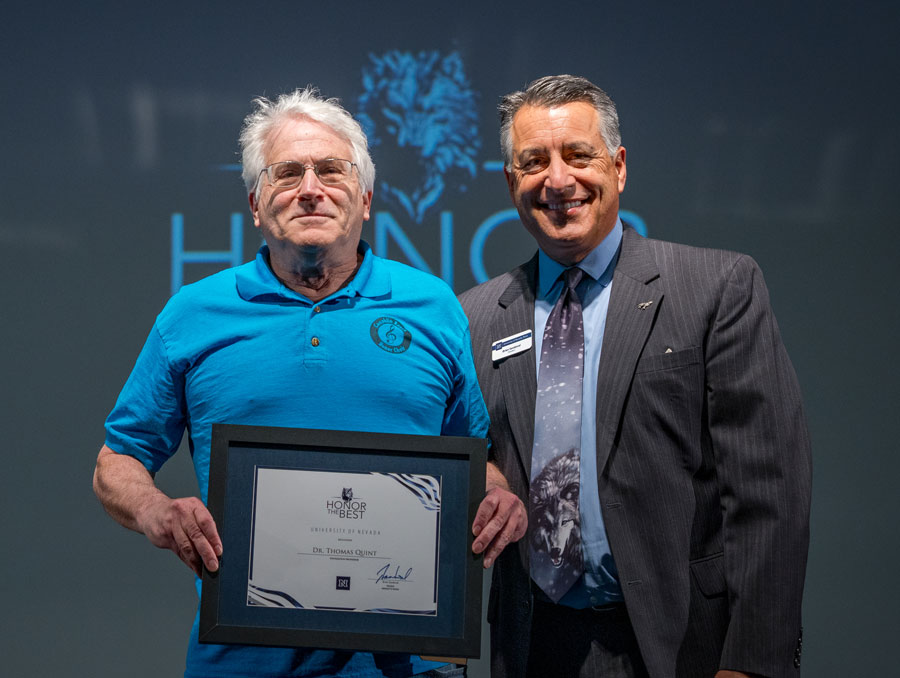Do android dogs dream of electric bones?
Undergraduate researcher Paris Acosta discusses his PREP award and non-linear journey through research
The world is on a countdown – a countdown to save itself through continuous improvement. Over hundreds and thousands of years, technology has consistently advanced. We benefit greatly from these improvements, such as the evolution from a wooden peg leg to a sophisticated prosthetic that incorporates joint sockets, suspension, stable mobility and support. But what if we could take prosthetics even further? That is my countdown.
From the peak of the COVID-19 pandemic in 2020 during my high school years to now entering my junior year of college at the University of Nevada, Reno, I have been dedicated to developing cybernetic implementations, commonly known as smart prosthetics. My goal is to create the perfect synergy between organic flesh and electrical/mechanical systems to enhance the lives of the physically impaired and even improve the current capabilities of the human body. I discovered this passion through various courses in high school and college, but I soon realized that I needed to transform this vision into reality through hands-on experience and technical expertise – classes alone were not enough.
This realization led me to the undergraduate research programs offered by the University, specifically the Pack Research Experience Program (PREP). Initially, I faced some delays with the program, but over time, I was able to choose a mentor. After seeking advice from fellow University students, I decided to approach Professor Yantao Shen in the electrical and biomedical engineering department, who offered me a position in his lab.

During my time in Professor Shen's lab, I had the opportunity to work on an exciting project in his biomimetic lab: implementing a Python-based Voice User Interface (VUI) script on a Unitree A1 robotic dog. When I started, I quickly realized that the task was a steep learning curve. The progress of the research was far from linear – at times, it even felt like we were moving backward. Despite the challenges, we had moments of success with the model, although the learning curve remained exceptionally steep due to the many prerequisites required for utilizing the A1 robot. Most of the experience involved discovering preliminary steps necessary to advance the project, such as learning the Robot Operating System (ROS) and natural language processing (NLP). Fixing the robot to make it operational also consumed a significant portion of our time. Thankfully, by the end of the semester, we had managed to get the A1 moving again, though progress on integrating the VUI script was minimal.

I was fortunate to work alongside several graduate students in Professor Shen's lab, including Sean Casement, Jared Vlach and Peng Cong. These individuals were incredibly supportive, and offered valuable advice on my project, academic matters and even life in general. The lab was not solely focused on completing tasks but was a community of individuals collectively exploring the unknown – or as it's more commonly known, research.
During my time in the lab, I also encountered new concepts that piqued my interest, such as the use of ROS. This interest led me to another undergraduate research program, the National Science Foundation (NSF) Research Experience for Undergraduates (REU) Site. I am now involved with the Collaborative Human-Robot Interaction for Robots in the Field project, where I am currently developing a MOVER (Movement, Oral, and Vocal Expressive Robot) to assist speech-language pathologists in their work with children.
My research experiences have provided me with invaluable opportunities to pursue my passions, meet new people and understand that progress is not always linear. These experiences have opened doors I never knew existed.
The clock is always ticking, and with each tick, we move closer to a future where technology can have a generational impact on those who are physically impaired. My undergraduate research is a small step toward my ultimate goal of helping those in the future. Even though the journey may not be linear, it is a risk I am willing to take in my quest to improve the world.
About the author
Paris Acosta is currently in his third year studying electrical engineering and computer science & engineering with minors in mechanical engineering and mathematics. He is also a competitor and volunteer in the Wolf Pack Powerlifting club. Paris’s plans after graduation are to pursue graduate school focusing on smart prosthetics, brain-computer interfaces (BCIs), artificial intelligence and their synthesis.

















